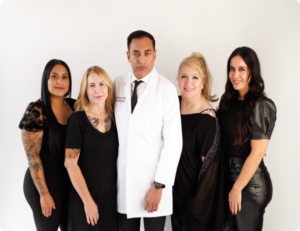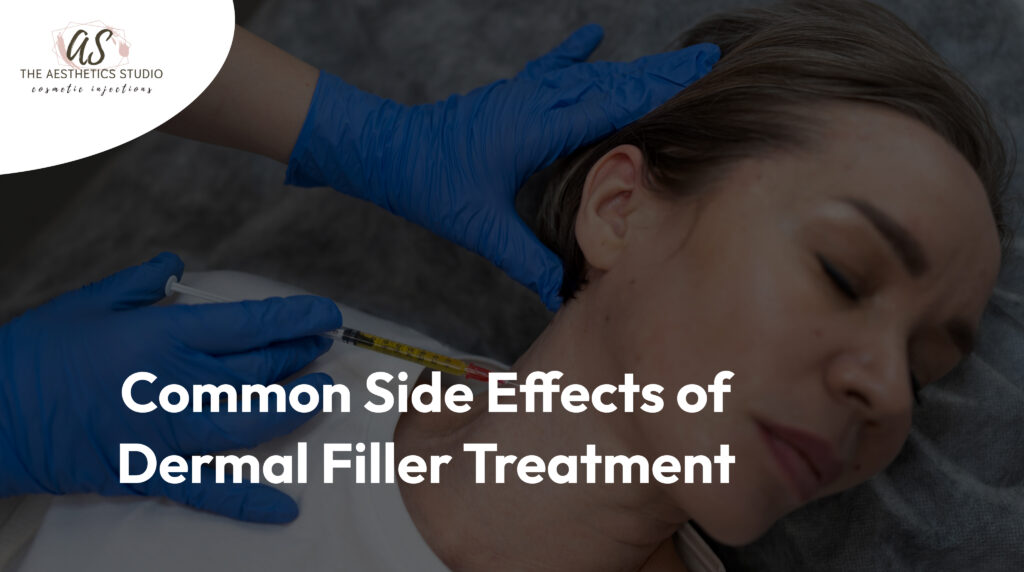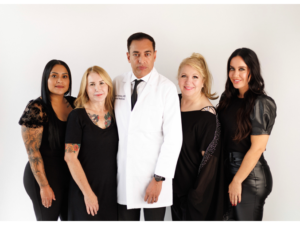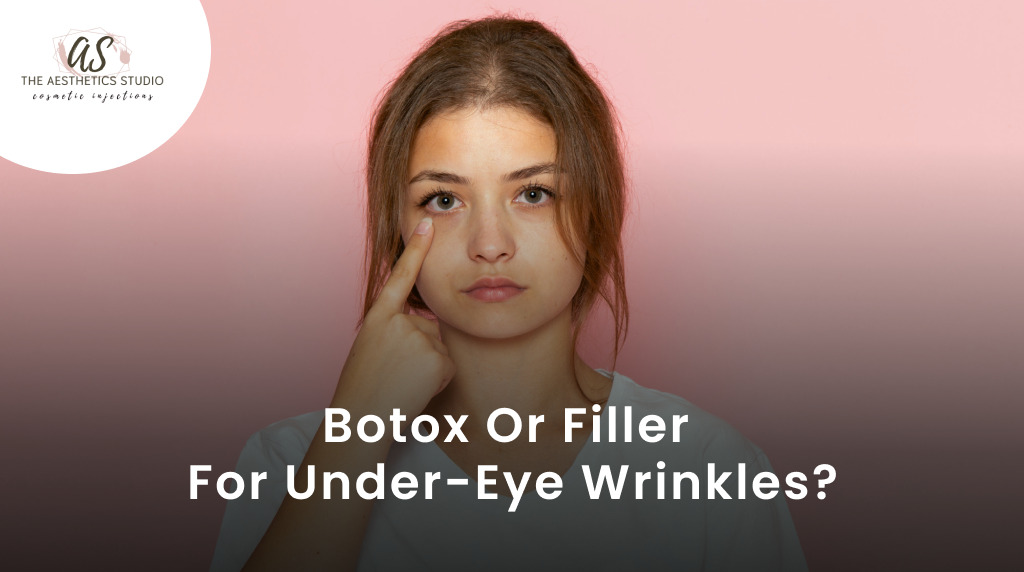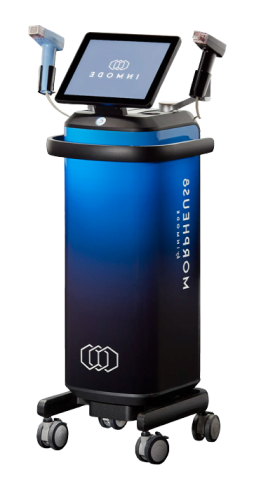Lately, there has been a surge in popularity for dermal filler treatments. It’s no surprise due to their non-invasive, near-instant effects. You’d be crazy not to consider them if you want to look younger without undergoing the knife. Just like any other medical treatment, there are some things that could possibly go wrong. In this article we will talk about what they are, how long they last, how to prevent them from happening and when is it necessary to seek medical attention.
Introduction to Dermal Filler Treatment
Dermal fillers are substances that can be injected in your face to smooth wrinkles and help you achieve a more defined face structure.They can also make your skin more plump. Essentially anything that makes you look younger with very little downtime can be fixed by dermal fillers. This is why people love them so much.
| Elevate your beauty with our exclusive dermal filler treatments! Ready for a radiant transformation? Schedule your appointment now and embrace your newfound confidence! |
Understanding the Side Effects
1. Swelling and Bruising
- Explanation of swelling and bruising as common side effects.
- Factors that contribute to swelling and bruising.
- Tips for managing swelling and bruising after dermal filler treatment.
2. Redness and Irritation
- Explanation of redness and irritation as common side effects.
- Why redness and irritation occur after dermal filler treatment.
- Steps to alleviate redness and irritation symptoms.
3. Pain and Discomfort
- What causes pain and discomfort after dermal filler treatment.
- Different pain levels experienced by individuals.
- Techniques to minimize pain and discomfort during and after treatment.
4. Itching and Rash
- Common reasons for itching and rash after dermal filler treatment.
- How to soothe itching and rash symptoms.
- When to seek medical attention if the symptoms persist.
5. Lumpiness and Unevenness
- Explanation of lumpiness and unevenness as potential side effects.
- Reasons why these issues may occur post-treatment.
- Treatments available to correct lumps and unevenness.
6. Infection
- Understanding the risk of infection after dermal filler treatment.
- Signs of infection to watch out for.
- Steps to prevent and treat infections related to dermal filler treatments.
7. Allergic Reactions
- Overview of allergic reactions associated with dermal fillers.
- Common symptoms of an allergic reaction.
- Managing allergic reactions and seeking immediate medical attention.
Read Also: Dermal Fillers: Dos and Don’ts for Youthful Skin and Plump Lips
Duration of Side Effects
It’s important to note that most side effects of dermal filler treatments are temporary. Redness and swelling usually subside within a day or two, while bruising may take a week or more to disappear completely. Itching and dryness typically resolve within a few days as well. In rare cases where lumps or bumps occur, they can often be massaged out by the practitioner.
Preventative Measures To make sure the risk of side effects is at its lowest, patients should follow aftercare instructions provided by the doctor. Make sure to apply ice to the area that was treated. This can help reduce swelling. Avoid doing anything physical for a day or two, it’s just not advisable. The importance of choosing an experienced practitioner is crucial since they have the knowledge to avoid any complications.
When to Go See a Doctor
For the most part, side effects are mild and temporary with no need for medical attention. However, there are instances where medical help is necessary. Rarely, severe allergic reactions require immediate intervention. If any symptoms become apparent like difficulty breathing or chest pain then you should definitely get help as fast as possible and not ignore it. If things don’t improve with time, a professional should be consulted if prolonged side effects happen.
Patient Reviews
Listening to other people’s experiences can provide valuable insights into dealing with side effects. Some individuals were able to handle mild side effects at home by using over-the-counter medication and listening to what their doctor told them to do. For those about to start treatment it’s nice for them to hear from someone who has already done so and learn how they’ve coped with problems that appeared after their dermal filler treatments.
Experts Openion
The need for an open stream of communication between patient and doctor cannot be stressed enough by industry professionals. A patient should feel comfortable talking about expectations and worries so that doctors can tailor a treatment plan unique to the individual rather than use a template plan on everyone they see. Follow-ups are also important since this keeps track of progress and lets doctors address problems promptly.
Read Also: Dermal Fillers vs. Botox: Decoding the Differences
Conclusion
In conclusion, dermal filler treatments can give your appearance a non-surgical boost but don’t forget that there are potential side effects that come with it. Redness, swelling, itching, bruising, and numbness are common but temporary. These should go away within a few days. While rare, allergic reactions and the formation of lumps require medical attention right away. With a good doctor, aftercare instructions, and knowing when to get help, you can go through dermal filler treatments with confidence.
Uncover the beauty of dermal filler treatments with confidence. While temporary side effects like redness and swelling are common, expert guidance ensures a smooth experience.
For tailored consultations on Botox or fillers in Greenwood, IN, call 317-820-7423 or book online at The Aesthetics Studio.”
FAQs
1. Can dermal filler treatment lead to permanent side effects?
Yes, dermal filler treatments can lead to permanent side effects, although they are rare. Complications such as infections, scarring, or tissue damage can potentially have long-lasting effects.
2. How long do the side effects of dermal filler treatment typically last?
Common side effects like swelling, bruising, and redness usually subside within a few days to a couple of weeks. However, severe or rare side effects might persist longer and require medical attention.
3. Are dermal fillers suitable for everyone?
Dermal fillers are generally safe, but not suitable for everyone. Pregnant or breastfeeding women, individuals with certain allergies, or those prone to keloid formation should avoid these treatments. A consultation with a qualified practitioner is essential to determine suitability.
4. Does the location of treatment affect the occurrence of side effects?
Yes, the location of treatment can influence the occurrence of side effects. Areas with thinner skin, like lips and under eyes, are more prone to swelling and bruising. Additionally, inexperienced practitioners might inadvertently inject fillers into blood vessels, leading to complications.
5. What should I do if I experience severe side effects after dermal filler treatment?
If you experience severe side effects such as extreme pain, prolonged swelling, or difficulty breathing, seek immediate medical attention. Contact your healthcare provider or go to the nearest emergency room for appropriate care.


